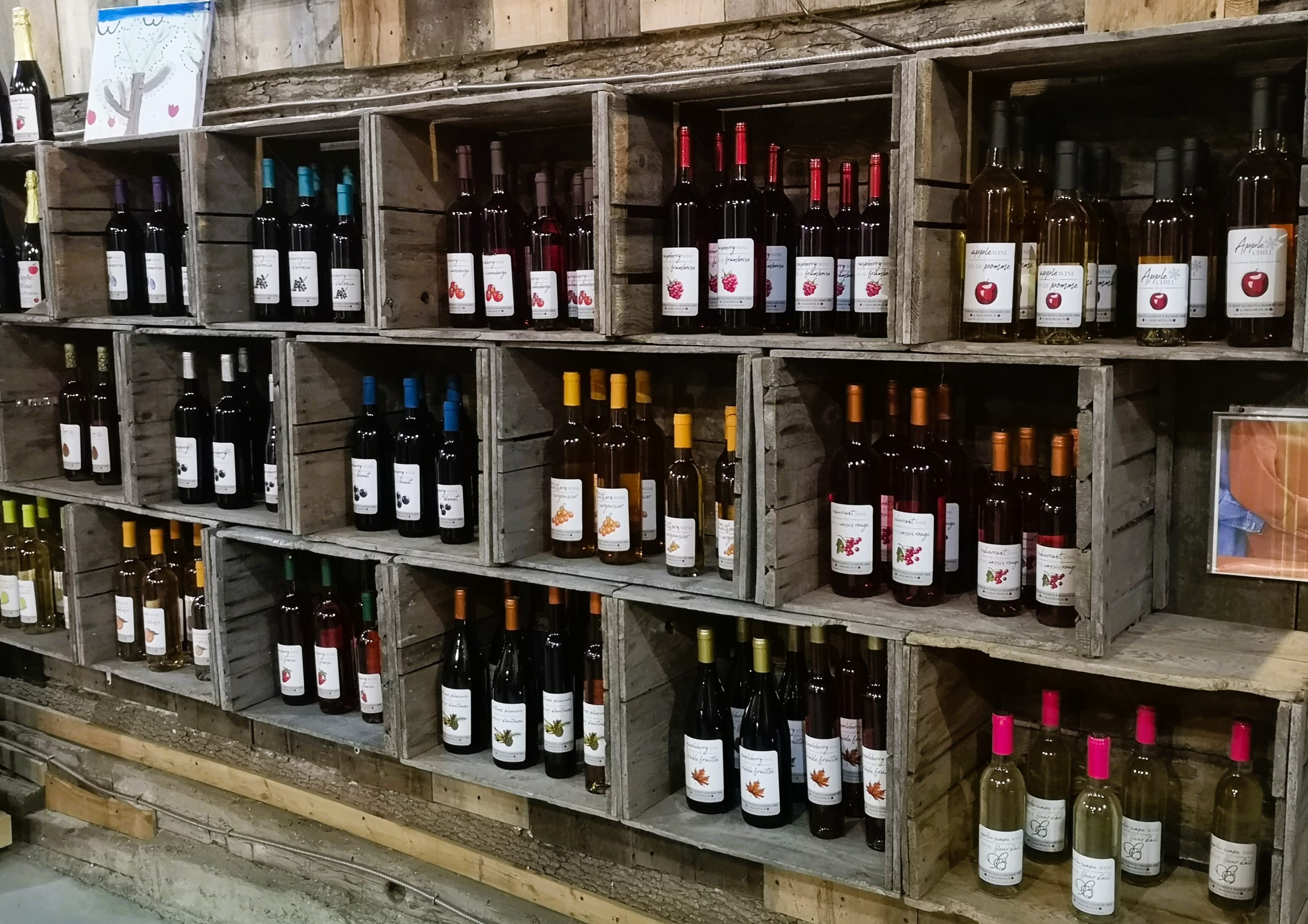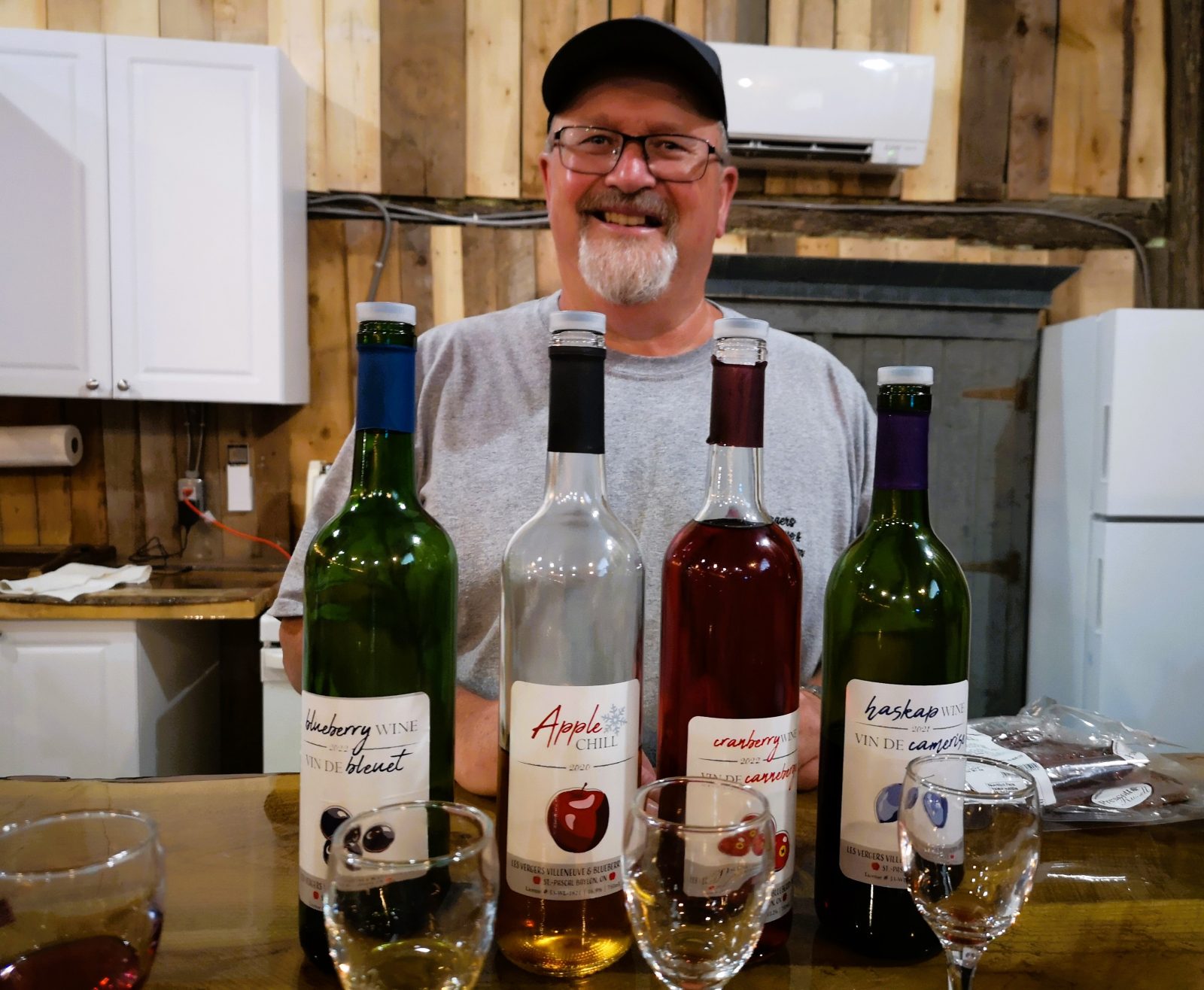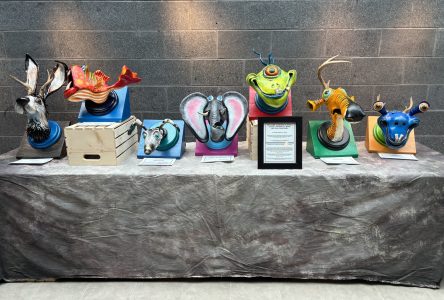Little-known haskap berries grow on a globe-shaped deciduous bush that can reach about two metres in height.
The fruit the native bushes produce, a sort of lighter-coloured, elongated or cylindrical blueberry, often ripens before early strawberries, depending on the weather, while offering a slightly tart flavour akin to a raspberry.
Most important to farmer and winemaker Michel Villeneuve, haskap berries, their name derived from a word in the rare Hokkaido Ainu language, also make a very fine fruit wine – a beverage that Villeneuve has been producing since 2017.
The history of his farm, Les Vergers Villeneuve and Blueberry Farm where he makes the wine, has its own rich history.
“This farm is 175 years old and has been in my family for 125 years,” Villeneuve says. “My great-grandfather was a dairy farmer here, but we converted it after the 1998 ice storm. He retired from farming – after ten days without power.”
For the last seven years, Villeneuve’s haskap wine has been part of a robust lineup of 19 fruit wines made on the 16-hectare farm, open to the public, on Rollin Road in the village of Saint-Pascal-Baylon.
“A friend of mine had been making fruit wine for about 40 years and used my blueberries. His kids didn’t want the business, so he asked me if I would take over. After I retired, I had the time and spent a year with him learning,” Villeneuve says.
He then bought all of his friend’s equipment and had it shipped and re-installed, including dismantling, board-by-board, his friend’s barn and rebuilding it.
Villeneuve’s six or seven hectares of planted crops, along with Mother Nature, generously provides the growing conditions for his wine’s raw ingredients: 2,000 blueberry plants, 3,600 raspberry plants, 500 cherry bushes and 50 grape vines along with 450 apple trees (with 25 varieties), 25 pear trees and rhubarb.
When the weather permits, Villeneuve will have hundreds of customers arrive to pick their own seasonal berries over the summer and fall.
As for the process of making fruit wine, it’s basically the same as traditional wine made from grapes as it is done around the world, he says.
The fruit wine portfolio includes apple, peach, cranberry, strawberry, blueberry, chokeberry (not chokecherry), cherry and elderberry; there is also a cooking wine made with garlic scapes.
“For the blueberry wine, we put 140-lbs of blueberries in the barrel, and we add water, yeast and sugar. It takes them about ten days to ferment and then four weeks of processing before bottling,” he says.
The blueberry wine is by far Villeneuve’s most popular: on the scale of dry to sweet wines he produces, blueberries are right in the middle. Blueberry wine and Brie make a good pairing: just recollect the number of times you’ve seen warm, pastry-wrapped Brie served with a blueberry compote at a restaurant to get the idea.
Of course, the ingredients and method of the recipe above brushes over the experience and trial-and-error learning-curve knowledge, gained over many years, that Les Vergers Villeneuve has perfected.
Inside the comfortable temperature-controlled barn and adjoining buildings, a couple of employees are busy bottling wine; there’s the faintest fruity-yeasty aroma wafting through the air.
Several large blue-plastic barrels of fermenting fruit and juice sit adjacent to beautifully shaped and corked narrow-necked glass demijohns filled and ready for bottling.
Les Vergers Villeneuve is a relatively small producer compared to some fruit winemakers across the province and into Quebec: roughly 13,000 bottles each year.

Where the tastings take place, Villeneuve describes the display shelves of wines as “serpentine,” winding from left to right and from dry (with no or little residual sugar), semi-dry and sweet to dessert, chilled and sparkling. Wines are analyzed by the LCBO Lab.
In the space of the quaint old slit barn, they’ve hosted farmers’ market events, barbecues, birthday parties, corporate events, and even a CD launch party.
“Our most popular event is our wine and cheese pairings,” he says.
At tastings, which might serve 500 to 600 people over the course of a summer, you get a list of the wine and the food pairings to jot down your thoughts and tasting notes.
Villeneuve laughs and describes how couples will each buy their own individual preferred wine in the 375-mL bottles that are also available.
I enjoyed the haskap wine, clocking in at a modest 9.9% alcohol by volume: it had a hint of sweetness and a balancing gentle tartness and longish finish; it was paired with a game salami made by Bearbrook Game Meats, based in Navan.
Take a sip of red currant wine and swirl it over your palate; eat a bit of cured meat or cheese, say Emmental, and then take a second sip of wine: it’s noticeable how different the wine’s flavour is.
A rhubarb wine, still in its production and testing phase, has the faintest notes of this first-of-spring vegetable; it’s quite refreshing, as is the dandelion-flower wine with the suggested pairing of cheese curds from St-Albert.
Villeneuve’s elderberry wine, the driest, has only four grams of residual sugar: that would count as a zero on LCBO shelf.
Quite delicious “Apple Chill” is more than merely chilled: a 19-litre jug of Villeneuve apple wine is set outside on a night when it will be -28C., a sort of magic fruit ice number.
In the frigid cold, the water and alcohol separate; the water freezes around the inside of the jug with liquid alcohol remaining in the centre.
“In the morning before the sun comes up, we bring the jugs in, poke a hole at the opening of the jug and recover the concentrated wine. We now have our apple chill wine (at 16.9% ABV) instead of apple wine,” says Villeneuve.
“Autumn Pleasure” was also a bit of a surprise: it’s a deep, dusky fruit wine and might remind one of Port with its raisin, prune and molasses tasting notes: yet, it’s made with Cortland apples, a cultivar developed in the late 1800s.
That all fruit wines are cloyingly sweet is clearly a notion of which Villeneuve wants to disabuse customers unfamiliar with the beverage.
“That’s the first thing we tell them,” he says. “And paired properly with food, you get all the additional flavours.”
Yet the biggest challenge to the business, he says, is climate change and adapting to unexpected harsh frosts and extremes of rain and drought, scorching heat waves and long cold periods.
“This is why we are introducing more resistant crops for wines, plants such as dandelion for its flowers, rhubarb, garlic scapes and possibly tomatoes.”
So, overall, are fruit and vegetable wines like that little-known haskap somehow a beverage that is idiosyncratic and unique to this part of the province? In part, that may be the case, if you ask Villeneuve who adds a geographic caveat.
“Everywhere there is fruit, fruit wine is popular – here, Niagara and British Columbia,” he says as a farmer who grows his own crops. “But you have to be able to get the fruit at a very good price.”
Food writer Andrew Coppolino lives in Rockland. He is the author of “Farm to Table” and co-author of “Cooking with Shakespeare.” Follow him on Instagram @andrewcoppolino.



